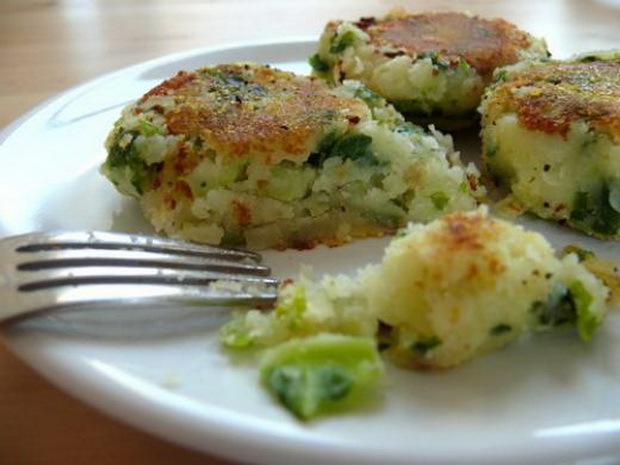Feeding a Family of Foue Really Cheap
The Cost of Food has Skyrocketed in the last few months and so many families are struggling.
If your grocery bill is getting out of control – maybe it's time to reign it in a little with these hints. Of course, not all are going to suit every family or situation. If your family has special dietary requirements or food allergies – that is going to be a bit harder. So take out of it what you can apply – and leave the rest!
Eating cheaply doesn't mean that you need to eat badly or starve your family, my family eat a well-balanced variety of dishes on a limited budget. Granted these tips are based on a family with very young children, but they can be adapted to save even the biggest family (with big hungry teenagers) money off their food bill.
Here are some hints and tips on how to cut your grocery bill in sensible ways!
More Reading:

Embrace Cooking from Scratch
This may be a bit of an epiphany for you – embrace cooking but only when you can be bothered. Save money by having something easy in the freezer that you can whip up faster than you can dial for a pizza or pick up fish and chips. The idea of making dinner every SINGLE night for the week can make me want to scream sometimes and to be able to open my freezer, take out a premade meal, whip up some fresh vegetables or salad and serve an appetising and nourishing meal makes all the work worthwhile.
Sometimes the stars align, and you have the time, space and money to do a couple of big-batch cook-ups. Make your family's special Bolognese times 4, or a batch of meatballs large enough to wage war, or vegetable curry by the pot load. Pack into containers and label (I use masking tape and a texta) then freeze.
Check out our Once A Month Cooking book for inspiration.

Once a Month Cooking
Learn how to shop, get the best grocery deals (not just from a Supermarket) – and to prep and cook a whole month's worth of family meals in just one day.
Available from Amazon
Eat Fruit and Veggies that are In Season.
This translates to eating what is the cheapest. Spring lamb, winter vegetables, stone fruit and many other things have a season. If you are on the hunt for asparagus in Autumn you're going to be shocked at the price. Every fresh food has a season and it's at its peak and conversely, at its cheapest. This may mean you eat a lot of the one type of fruit or vegetable or it may mean you can branch out when things are repetitive or boring you.
Bonus point if you buy lots and can, jar, freeze or dry it for the future. Ask your local fruit and veg store when things such as apricots or tomatoes are in season and buy a box or two then spend an afternoon processing them.
Bulk Buy or Stockpile (If You Can Afford it)
The other option is to buy in bulk in a more processed and easily stored form. Ask around for bulk options of chicken, beef, lamb or pork (the local butcher may have bulk deals as well); look at co-ops for bulk dry goods; or purchase from catering suppliers for berries, herbs and spices, or oils. It's an initial outlay but will save you money in the long run.
- Items for the Household you Should Stockpile to Save Money
Cook from Scratch.
There are very few processed foods that can't be replicated at home. It is always cheaper to make mains, sides, protein, vegetables, rice and nearly everything else from the basic ingredients. Look at what you eat and work out how to make it. You can then hand down some lovely family recipes for your fried rice or Bolognese sauce to your kids.
Learn about your food
You will save so much if you know how to use products that you purchase, and also know how long things will last. If you learn the difference between a "best before" date and a "used by" date you will get more mileage out of your food. Buying in bulk only saves you money if you don't then end up with 6kg of sultanas passed a "best before" date that you aren't sure about using!
Learn about Loving Leftovers.
Your budget will thank you if you learn to wrap leftovers in pastry with a bit of cheese, or spruce up some plain rice with leftover protein and a dash of tabasco sauce. Stretch any leftovers to another meal and consider it a freebie.
Great ways to 're-brand' your leftovers include:
- Topping leftovers on large baked potatoes or sweet potatoes with steamed veggies
- Putting leftovers into a jaffle.
- Serve leftovers on toast for breakfast the next morning

Lower your Food Standards – Just a Little.
Instead of salmon steaks for dinner tonight, dice a small cutlet and put into a serving bowl before topping with risotto or soup, using the residual heat to cook the fish. A small morsel will flavour the bulk of vegetables, pasta, lentils or another staple and the focus can be on the in-season vegetables rather than the more expensive protein.
Think Outside the Box
I make a breakfast fruit crumble for busy weeks, so we can have that reheated for a quick breakfast. It's mostly fruit, very little added sugar and a basic crumble topping, baked in the oven after dinner is cooked. Instead of prepping oatmeal and fruit, this is reheated and yoghurt added. Oats and coconut fill bellies and are much cheaper than processed cereals!
Eggs are as well and can extend leftovers into something that's suitable for breakfast, lunch or a picnic dinner. It also avoids skipping breakfast, or worse yet, buying it on the run. Even preparing croissants or sandwiches in bulk and toasting them in the morning will beat the café at its own game.
Shop Simply
Shop once a month in a bulk location and every second week at the supermarket. Shop each week for fruit and veg, milk and bread and commit to not just popping out for extra ingredients if you're making tonight's meal. For bonus points you could shop one week for meat, one week for veggies and fruit, one week for staples and one week for eggs and dairy and your menus can fluctuate with the changes in your purchases.
Towards the end of the cycle, you eat more vegetarian meals and less meat, get creative to stretch the cream further or learn about egg substitutes.
Learn to Improvise with Ingredients
If you're out of almond meal, swap it for oats. Out of eggs, swap them for any of the ideas that Google will tell you. Buttermilk missing? Add some vinegar to normal milk and save a trip to the supermarket. Some would sum this tip up as "GIYF" because Google really is your friend.
Reduce, Reuse and Recycle
Make stock to get an extra meal out of a chicken, or use the leftover sauce from a crockpot meal as the base for meatballs. Halve the expensive component of the meal (pine nuts, fancy cheese, expensive meat) and enjoy it as a highlight rather than the limelight. Recycle jars and containers so that you can buy in bulk and store correctly. Think about what you can make for snacks in particular because snack food is especially expensive per serve. Homemade slices, biscuits and muffins are easy to make in bulk and you're increasing the efficient use of your oven if you use it to do more than one batch at a time.
Free Meals
Try to eat from the pantry or freezer for one meal a week, and this is essentially a "free" meal as you've already paid for it. Sneaky but effective and some of the best memories have been made with baked beans on toast or a picnic of unlabelled freezer surprise meals!
Lastly, go back to basics!
Look at the cheap cuts of meat to stew or make curry out of, the vegetables that are in season this week, the price difference between frozen and fresh (often frozen is cheaper and stores longer with lots of evidence to show that snap-frozen is actually more nutritious!), no name branded ingredients and portion control. Use other forms of protein such as beans, chickpeas or quinoa and explore a variety of cuisines if you're not sure of how to cook them.
Meal planning and writing a list have two-fold benefits because it means that you can see what kind of week you're in for and not over cater if you know you're out for a meeting this week or lunch is at Nana's this Saturday. It also means that each meal is covered and you save time and money by not making extra trips to the shop (with all the added temptations).
So what's your family's meal budget look like? Do you think there is room to save perhaps 10% of it next month? What other tricks do you have for minimising the amount of money you eat?
Source: https://www.stayathomemum.com.au/my-lifestyle/shopping/groceries/feed-family-4-around-400-month/
0 Response to "Feeding a Family of Foue Really Cheap"
Post a Comment